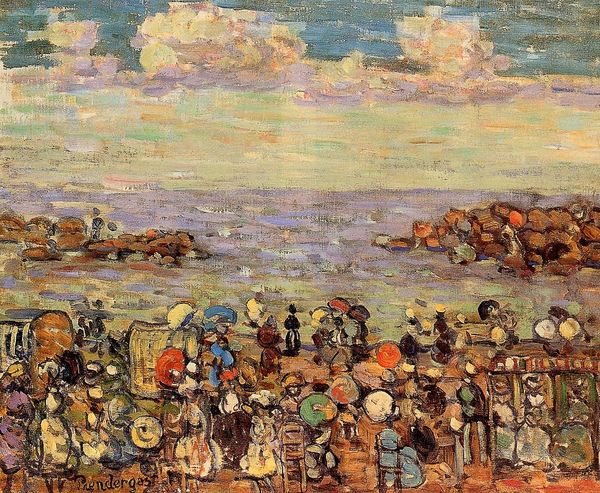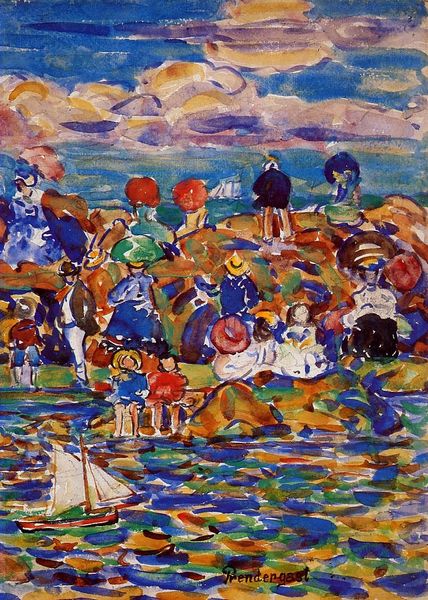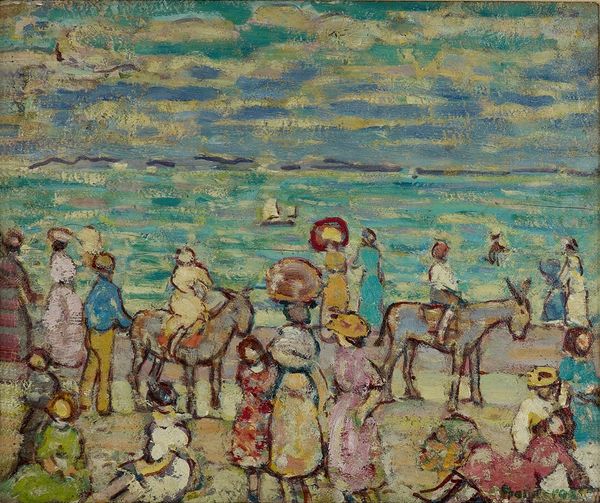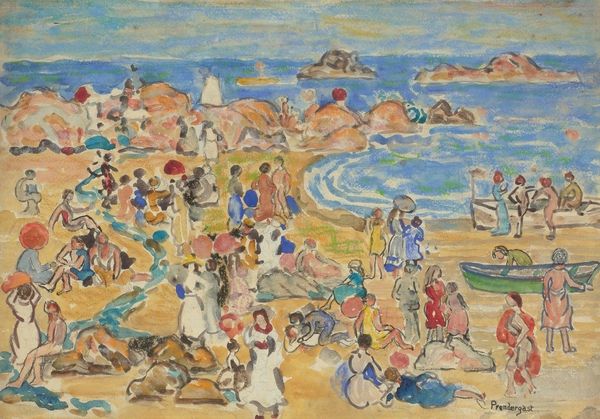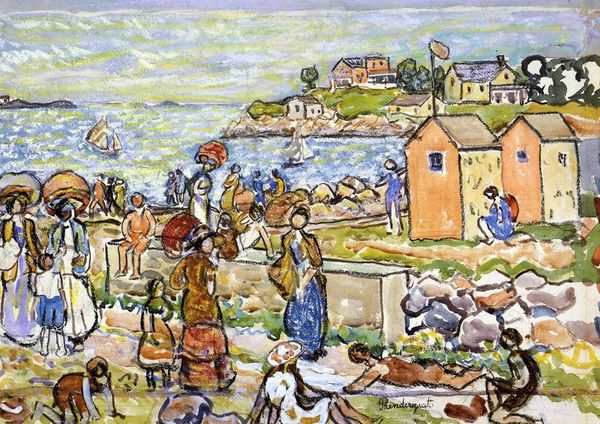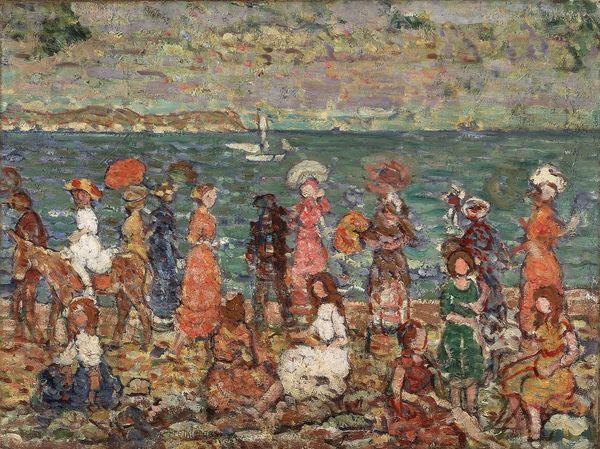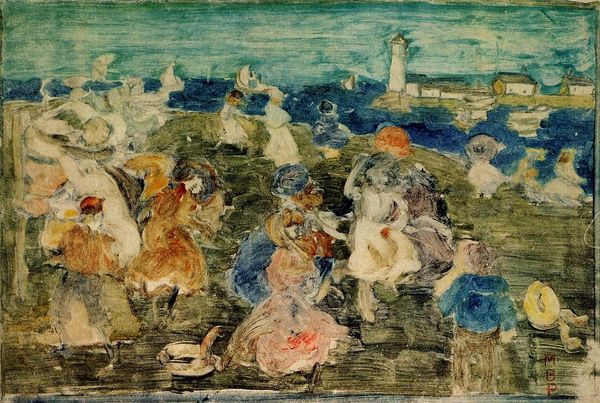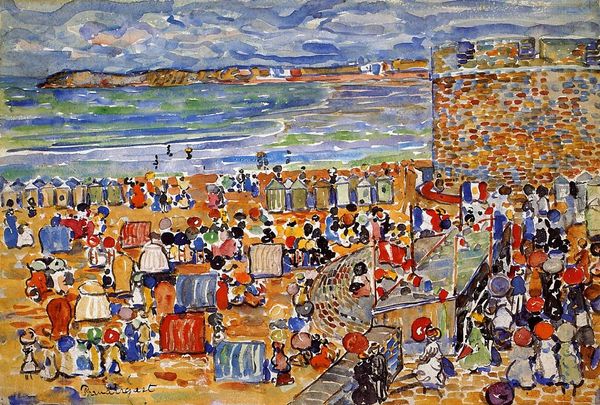
Copyright: Public Domain: Artvee
Editor: This is Maurice Prendergast's "Holiday in New England," painted around 1910 or 1911, using watercolor. It depicts a lively beach scene. The figures seem almost sketched, very free and light, almost weightless. What’s your take on this piece? Curator: Well, if we really look into the materiality of this watercolor, we see a democratization of art production happening. Prendergast, while working within impressionistic modes, employed a medium, watercolor, and a genre scene to capture this "holiday." It highlights a burgeoning middle class experiencing leisure. Consider the socio-economic implications – who had access to these coastal vacations, to the clothing depicted, to the very act of observing and representing it? Editor: That’s a fascinating point. I hadn't thought about access to materials in that way. Do you see that impacting the style? Curator: Absolutely. The immediacy of watercolor, its relative affordability and portability compared to oils, speaks to a different artistic practice. It allowed Prendergast to quickly capture fleeting moments, to document a changing society marked by increased consumption and leisure activities. Observe how the visible brushstrokes, almost childlike in their application, belie a more considered process, inviting us to ponder not just what is shown, but how it was made, and who could participate in its creation and consumption. Are these forms carefully stylized to reflect that labor and ease? Editor: So it's not just about pretty colors but about understanding who could make this, who is represented and who is doing the representing... Wow, there is a lot to unpack about this piece, even in its casual appearance. Thanks! Curator: Precisely! Looking at the art's production and context truly enriches the viewing experience.
Comments
No comments
Be the first to comment and join the conversation on the ultimate creative platform.
